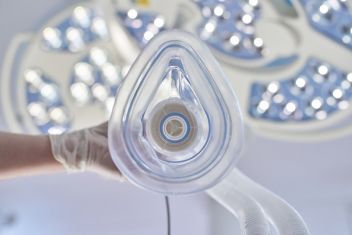
How Anesthesia Works
Anesthesia allows doctors to control the amount of sensation and consciousness a patient experiences. It does this by controlling a person’s blood pressure, heart rate, and breathing. Doctors use anesthesia to induce relaxation, reduce or eliminate pain, render you unconscious, and/or make you sleepy.
What a doctor decides to use on you depends on the procedure you’ll be undergoing. Anesthesia typically falls under two categories: general and local anesthetic.
Local anesthesia is used to numb a certain area of your body. When a person is numbed using local anesthesia they’re awake during the procedure; they don’t experience any pain in the area that is being treated.
Regional anesthesia is used to block pain to larger portions of your body, but you aren’t completely asleep. Common forms of regional anesthesia include epidurals given during pregnancy, where a woman does not feel the pain of childbirth but is awake to deliver the baby. She may feel a bit groggy and out of sorts, but overall is awake.
General anesthesia is the type of anesthetic used to “put a person under.” When a person is under general anesthesia, they’re asleep and affects your brain and entire central nervous system.
How is the type of anesthesia used determined?
The type of anesthesia used to treat a person will depend on the procedure they’re undergoing, as well as their medical history. For example, a person who has certain heart defects won’t be able to be put under general anesthesia. This is why some people aren’t candidates for certain surgeries.
For those who are eligible, general anesthesia is commonly used for procedures that are more invasive, whereas procedures like root canals might only require regional or local anesthesia.
What are the side effects of anesthesia?
Common side effects of anesthesia include headaches, nausea, and dizziness. What a person experiences will depend on the type of anesthesia they are given. After a person wakes from general anesthesia, they are usually groggy and nauseous. Local anesthesia causes numbness and tingling in the area that it was delivered to and tends to wear off quickly.
How should a person prepare for anesthesia?
How a person prepares for anesthesia depends on the type of anesthesia they’re given. Those going under general anesthesia should avoid eating or drinking for twelve hours before being given it. This is in case they react to the anesthesia and end up vomiting while under. It can prevent them from choking.
Those under general and regional anesthesia should also arrange for a friend or family member to drive them to the procedure and pick them up.
Ultimately, anesthesia choices should be left to a patient and their doctor. If you have questions about anesthesia, contact us. Dr. Faleye is always happy to discuss options with patients and answer any questions you might have.


